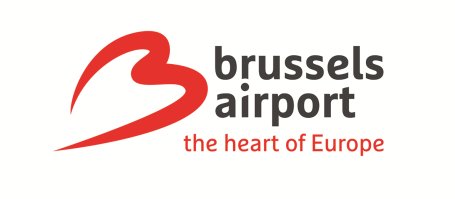Over 2.2 million passengers passed through Brussels Airport in July, a sign of a real summer recovery!

Historic record for average number of passengers per flight. Over 64,000 tonnes of goods transported
During the first month of the summer holidays, Brussels Airport welcomed more than 2.2 million passengers, which is 81% of the passenger numbers in July 2019. Brussels Airport continues the positive trend as this is again the highest monthly result since the crisis began in March 2020. In addition, the average number of passengers per flight reached an all time record of 151 passengers, compared to an average of 137 passengers in 2019. On the cargo side, volumes are down on last year (-14%), but up 15% compared to 2019.
Passenger traffic: 81% of the 2019 traffic numbers
In July, 2,223,105 passengers chose Brussels Airport for their holidays and travels, representing 81% of the total number of passengers in July 2019. A very positive result that exceeds the forecast and also marks a new record in absolute figures since the beginning of the Covid crisis. This growth is obviously linked to the strong recovery of the holiday market, as well as to the many passengers visiting family and friends abroad. In addition, the transfer of a certain number of flights from the Netherlands to Brussels Airport and the increase in bookings by Dutch travellers from Brussels Airport to avoid long waiting times at Dutch airports also had a positive effect. However, the good weather in July in Belgium, the few cancellations by airlines due to strikes abroad or staff shortages and the late recovery of the markets in Asia probably had a negative influence on the total results.
As usual in July, the first month of the summer holidays, the number of departing passengers is higher than the number of arriving passengers, it reached 83% of the number in July 2019. The share of departing transfer passengers is 12% and thus remains 2 percentage points lower than in 2019 due to the stronger recovery of local departures and a decrease in transfers within Europe.
The top 10 destination countries in July were respectively Spain, Germany, Italy, Portugal, Turkey, France, the US, Switzerland, the United Arab Emirates and the United Kingdom. Turkey, Greece, Morocco and the United States were very successful and matched or exceeded the July 2019 results. The top ten destinations in July were Madrid, Barcelona, Lisbon, Rome, Alicante, Malaga, New York, Istanbul, Milan and London.
Cargo: total volumes down by 14%
In July, cargo transport at Brussels Airport decreased by 14% compared to July 2021. Air cargo volumes fell by 13%, while the full cargo segment declined by 21%. Full cargo flights with passenger aircraft continue to decline gradually, as expected, due to the recovery of passenger traffic. Last year, this segment accounted for a significant volume of freight.
Express services were down 15%, as in previous months, due to a combination of weaker growth in the Western European e-commerce market and the temporary reallocation of some flights to other airports. Cargo on board passenger flights increased by 11%, due to the increase in the number of passenger flights. Finally, trucking volumes fell by 18%.
Asia was the most important region in terms of imports and exports, but volumes were lower than last year due to lower available capacity and the temporary effects of warehouse closures in China. Africa is the second largest import region and the third largest export region, showing growth over last year in both trade routes. North America is the third largest import region and the second largest export region.
Flights
The total number of movements in July 2022 increased compared to 2021 reaching 18,203 flight movements, which is still 19% lower than the level in 2019. The average number of passengers per flight reached a new record of 151 passengers, compared to 137 passengers in 2019. This is due to a further increase in flight occupancy and the deployment of larger aircraft.
On the cargo side, the number of cargo flights has decreased by 12% compared to 2021.
